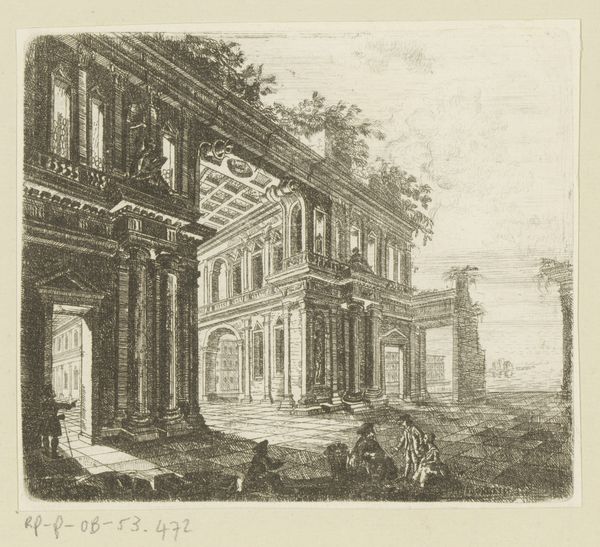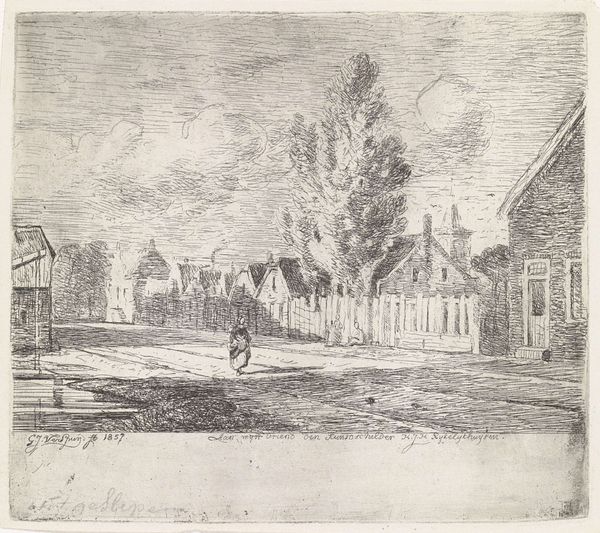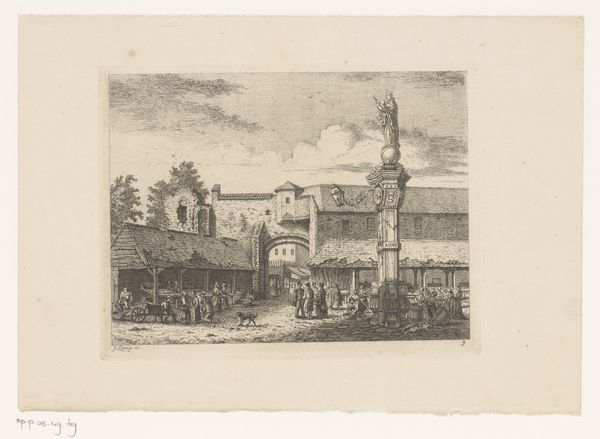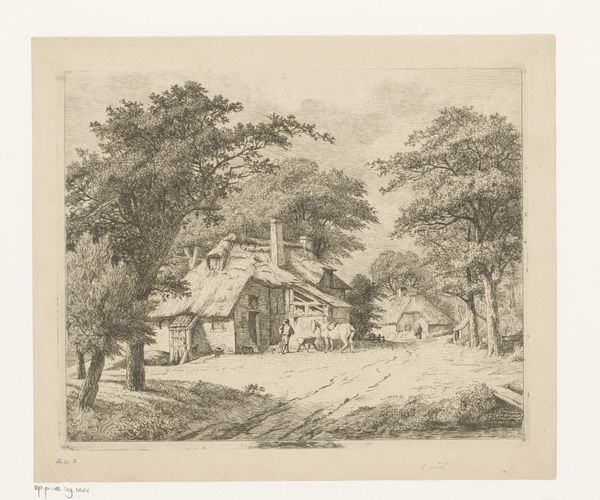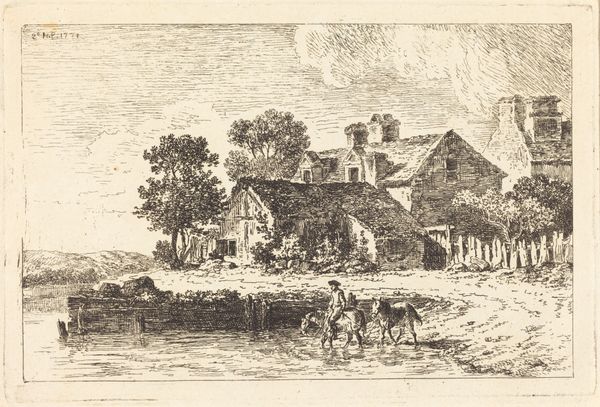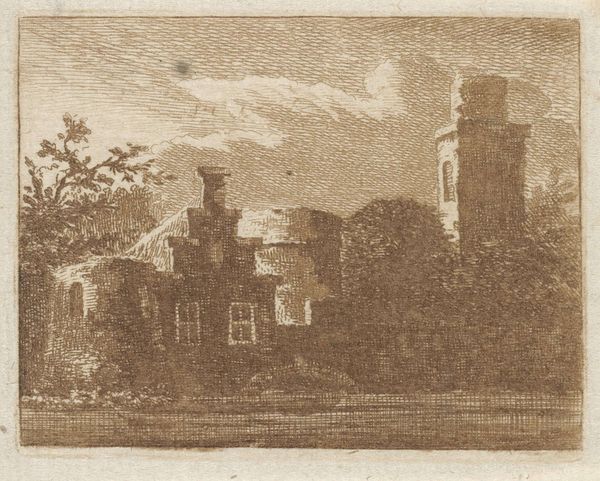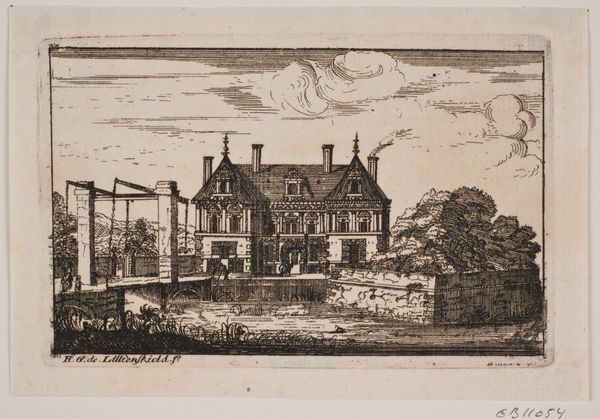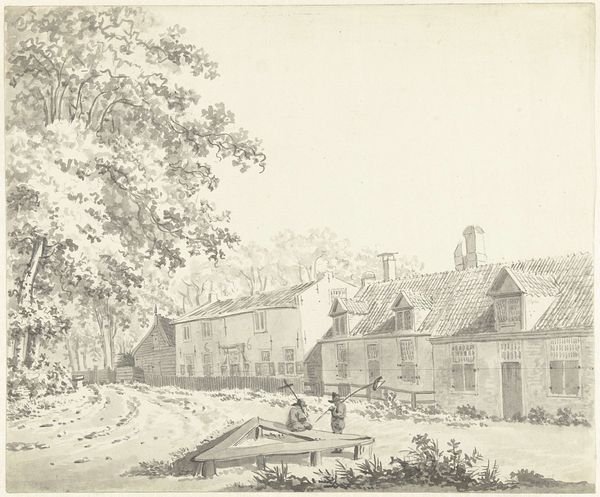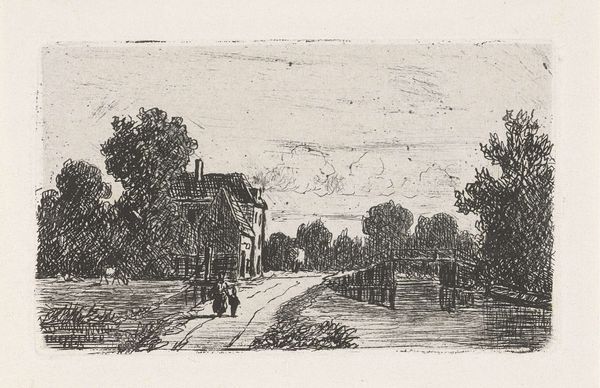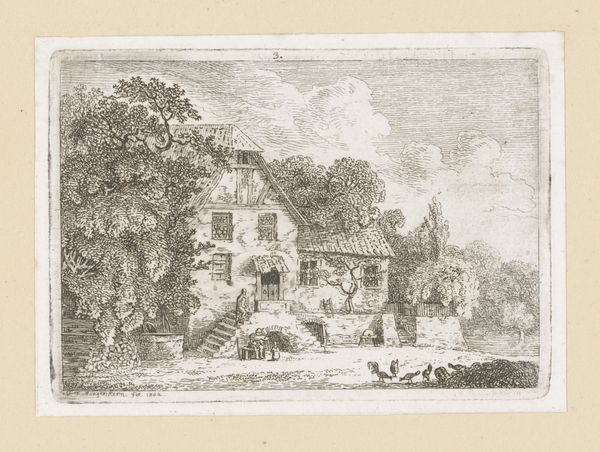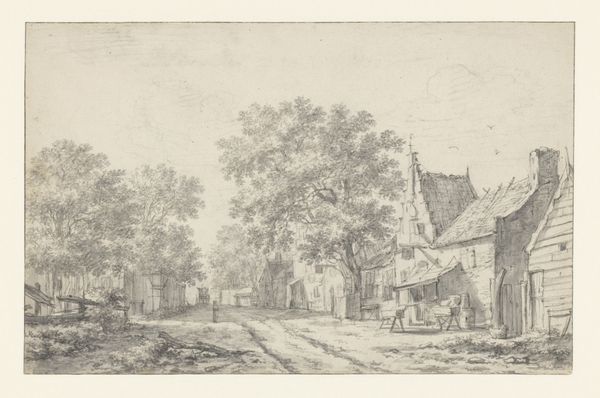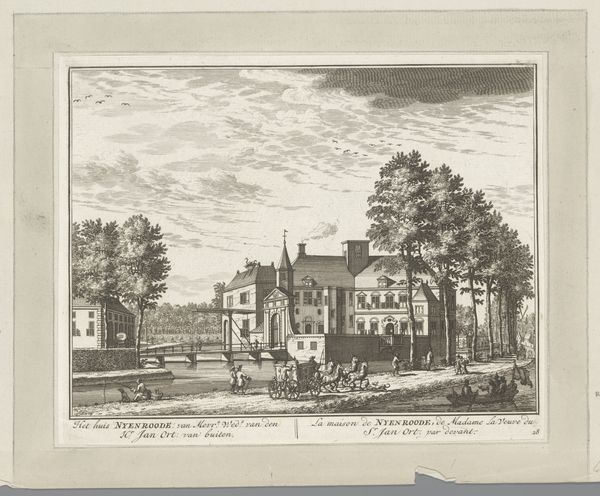
print, etching, architecture
# print
#
etching
#
landscape
#
etching
#
architecture
Dimensions: height 128 mm, width 170 mm
Copyright: Rijks Museum: Open Domain
Curator: Instantly, I’m struck by the somber and subdued atmosphere. There is an inescapable melancholy. Editor: The piece that evokes this mood is "Brusselse Poort te Maastricht" an etching by Alexander Schaepkens. Its creation dates sometime between 1830 and 1899 and now resides at the Rijksmuseum. Curator: The etching medium is masterfully used, capturing a stark realism and reflecting on power structures—the literal gates restricting movement but perhaps also class divisions during this period. The composition directs our gaze—but towards what? Limited possibility? Editor: Note how the artist’s use of line directs attention. The hatching and cross-hatching define form and create depth, giving substantial weight to the architectural features while almost obscuring the human figures. This creates a deliberate imbalance. It reminds me of the power that architecture, in general, holds. Curator: It reminds us of the importance of gatekeepers. Who gets to enter? Whose movement is controlled? During this time, Maastricht, was an important military hub in the Netherlands and also the place that enslaved Africans brought into the country arrived. Considering Maastricht was also divided culturally and politically between the Dutch and French at various points, the etching almost becomes a stage for different historical interpretations of control. Editor: A very thought-provoking way to view this, thinking about physical as well as metaphysical gates and barriers, historical legacies of movement—and also stagnation! Considering Schaepkens captured a very somber realism by focusing on line, the artist captured both a moment in history and something universally timeless.
Comments
No comments
Be the first to comment and join the conversation on the ultimate creative platform.
